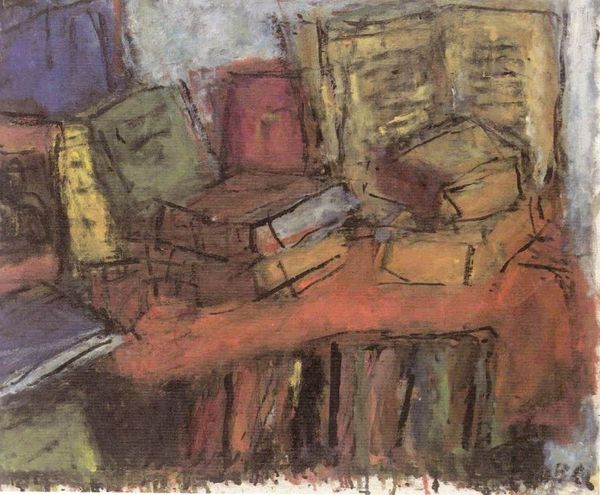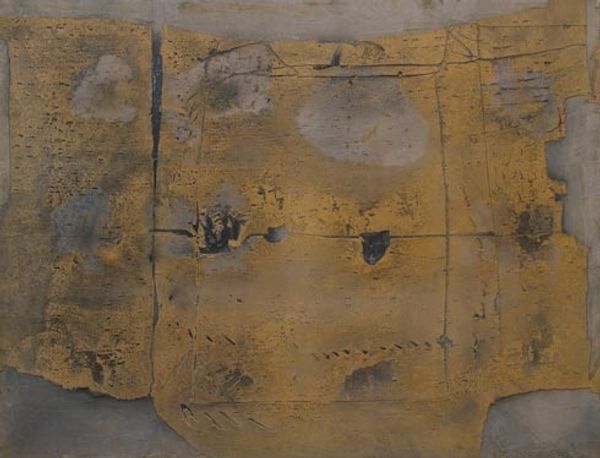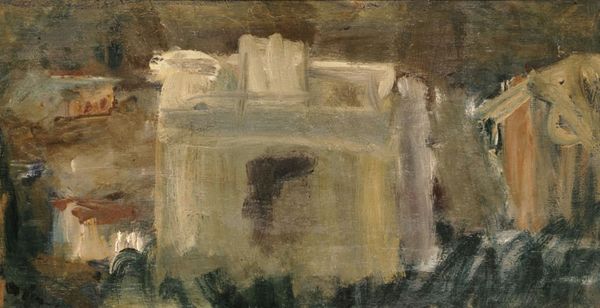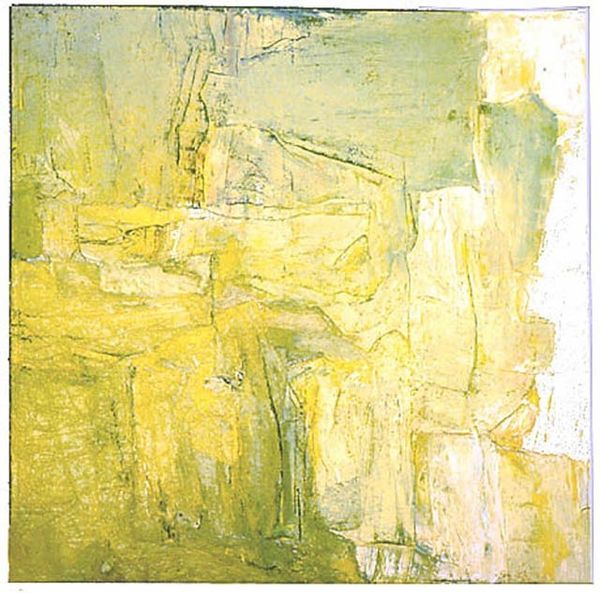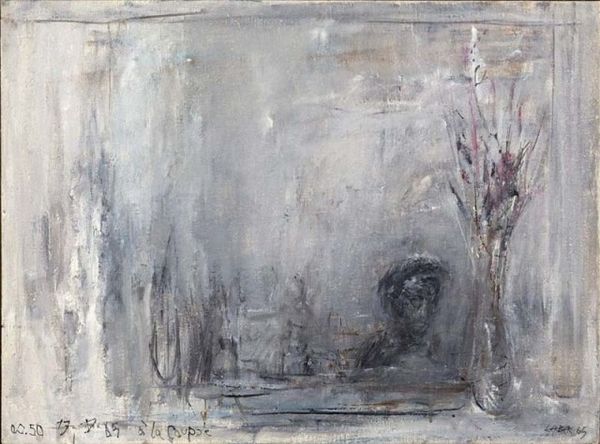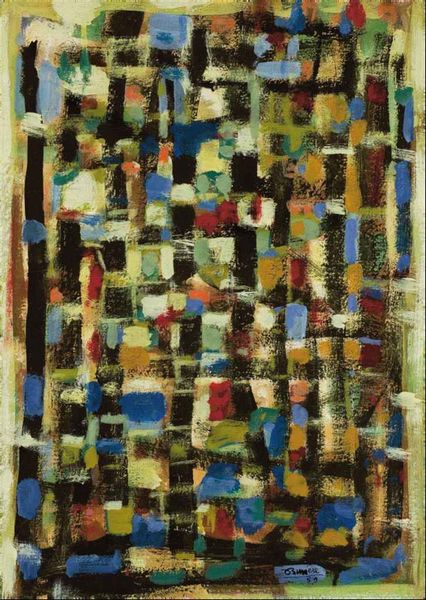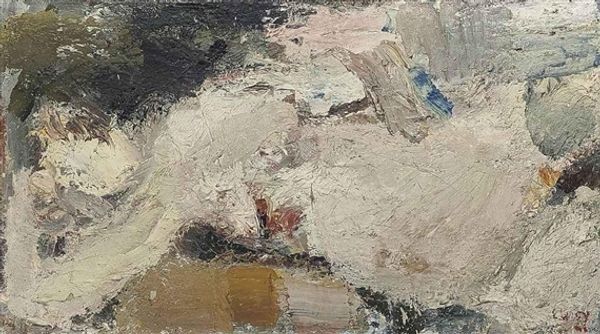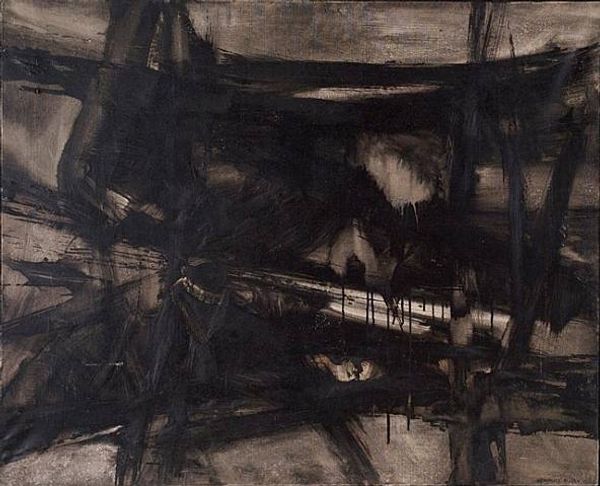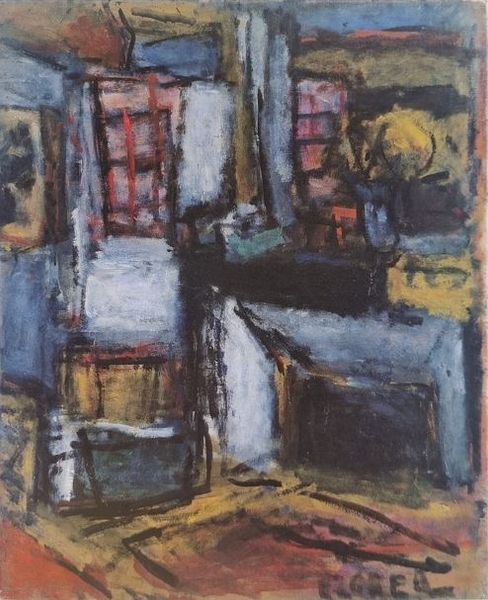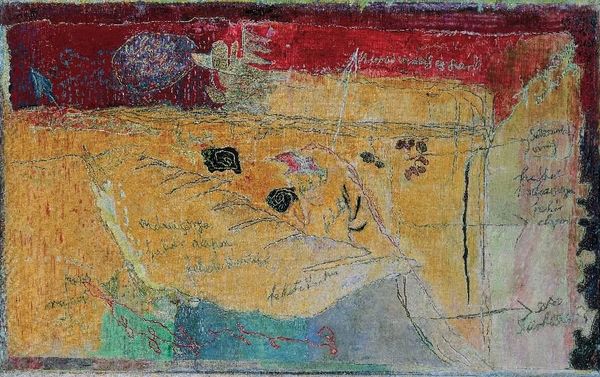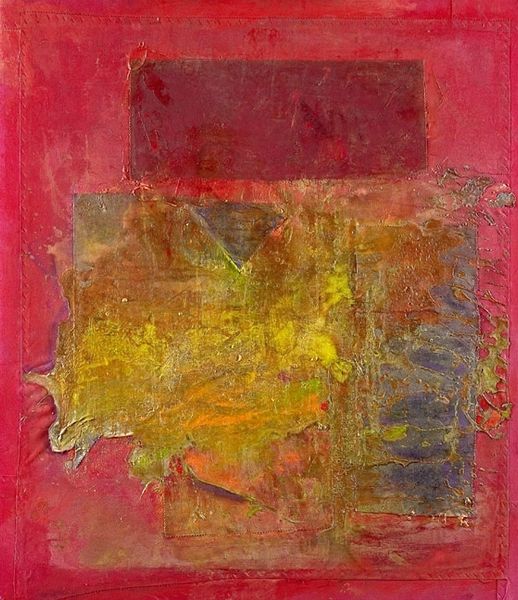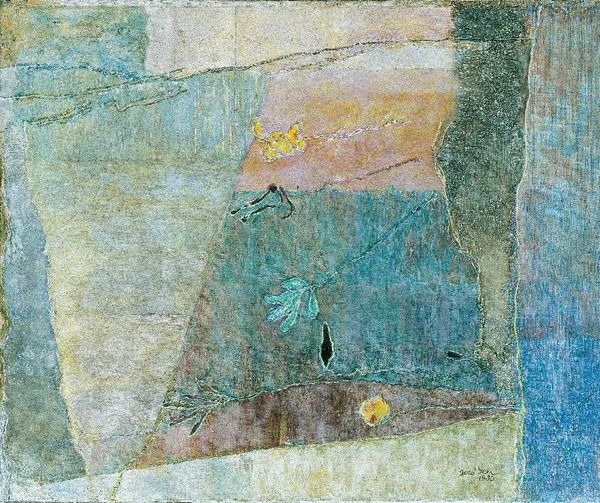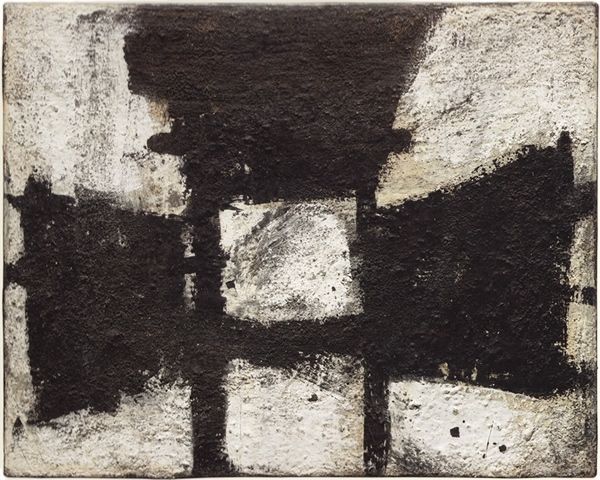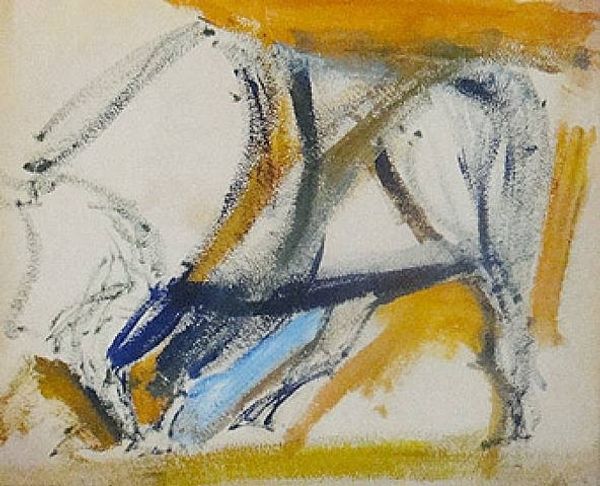
matter-painting, painting, impasto
#
abstract-expressionism
#
abstract expressionism
#
matter-painting
#
non-objective-art
#
painting
#
impasto
#
modernism
Copyright: Jean Fautrier,Fair Use
Editor: So, here we have Jean Fautrier's "Petite boîte carrée" from 1955, made with matter painting and impasto. It feels really… tactile. I'm curious about your take—what stands out to you in this work? Curator: I find myself immediately drawn to the materiality of this piece. Consider Fautrier's engagement with matter painting. He isn't simply applying pigment; he’s building a surface, almost sculptural in its density. This emphasizes the physicality of artmaking itself. How do you think this physicality relates to the post-war context in which it was created? Editor: That’s a really good question. It makes me think about… maybe it's a rejection of pre-war artistic ideals? A turn to something raw and tangible after so much devastation. Curator: Precisely. This is art as process and material transformation. The impasto, the layering – it's about revealing the labor, making visible the artist’s engagement with the canvas. How does the square shape interact with this material emphasis? Editor: Well, it almost grounds it. It gives structure to what otherwise might feel chaotic. It’s a small space to contain such dense textures. Curator: Think about the political context as well, right after World War II. Many artists sought to challenge established social and cultural boundaries, this almost violent application of materials challenges pre-war bourgeoise aesthetics of beauty and polish. It implicates not only art, but production, labor, even consumption itself in a dialogue with devastation and, perhaps, renewal. Editor: Wow, I hadn't really considered it that way. So it’s less about what it represents and more about what it *is*, and what went into making it. Curator: Exactly! Fautrier invites us to consider art's production and reception as embedded within social and economic forces. I think that’s important when examining abstract art. Editor: I'm definitely going to be looking at materials differently now, seeing the process and context within the paint itself. Thanks!
Comments
No comments
Be the first to comment and join the conversation on the ultimate creative platform.
